How Are Fancy Colored Diamonds Graded?
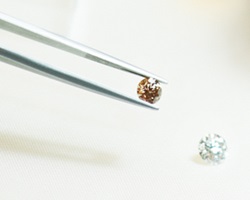
Fancy brown color diamond compared beside a colorless diamond.
As people around the world become more affluent, fancy colored diamonds have seen a spike in popularity among shoppers and investors. In recent years, huge colored diamonds like this vivid pink pear diamond have often been making headlines in record-breaking auctions.
Unlike the colorless diamonds that we typically see in everyday jewelry, fancy colored diamonds are often sold unmounted and can cost 10-20 times more compared to a colorless diamond of the same size.
When it comes to determining the value of a fancy color diamond, the color tone, hue and saturation of the diamond are the key factors that affect its price. So, if you are planning to buy an expensive fancy colored diamond, it is imperative that you understand how things work.
In this article, we’ll go over the grading process used by GIA, the industry’s most recognized grading laboratory. Hopefully, this will give you insights to help you understand what you see in a grading report and help you make better purchase decisions.
Let’s jump right in…
Methodology Used to Grading Fancy Color Diamonds
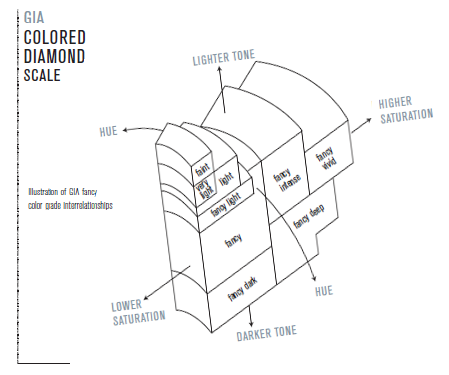
The GIA colored diamond scale.
When a colored diamond is being graded, the first thing that is done is to establish its face-up color against a neutral grey background (Note: D-Z diamonds are graded face-down). Once the basic color of the diamond (e.g. blue, red, yellow etc..) is determined, comparisons of that representative color will be made against a set of predefined reference diamonds.
The GIA grading system makes use of color space areas which is split into ‘boxes’. In each of these boxes, reference stones for the specific color and hues are neatly organized and framed. The diamond being graded will then be placed in one of these boxes for comparison to find a color characteristic that closely matches its own.

GIA reference color chart for pink diamonds showing color transitions.
Once a match is found, the diamond will be classified using the description of the color space where it is placed. As you can see, the implementation of the grading methodology is done in a standardized manner such that the grading results obtained are repeatable.
For example, once a grader has determined the terminology used to describe the diamond, another grader should arrive at the same terminology if he/she grades the stone separately again.
What Are Hues, Tones And Saturation?
GIA’s fancy color grading system is based on 3 main attributes: tone, hue and saturation.
Hue refers to the primary color of the diamond such as pink, yellow, blue, brown etc… In total, GIA recognizes 27 different hues and each of these hues has a range of possible colors.
Tone defines how dark or light the hue of the diamond is.
Saturation refers to how intense the coloration of the diamond is.
Why GIA And Not Any Other Labs?
When it comes to buying fancy colored diamonds, GIA is the only lab you should trust. Other labs often have lax grading standards and do not have the proper equipment to detect treatment processes! If you don’t want to get ripped off, NEVER buy a colored diamond that isn’t graded by GIA.
Color Descriptions Assigned by GIA
The GIA color grading system uses nine grades to distinguish color ranges. These are: Fancy Vivid, Fancy Intense, Fancy Deep, Fancy Dark, Fancy, Fancy Light, Light, Very Light and Faint. For fancy colored diamonds, the general rule of thumb is that the stronger the hue, the more valuable the stone becomes.
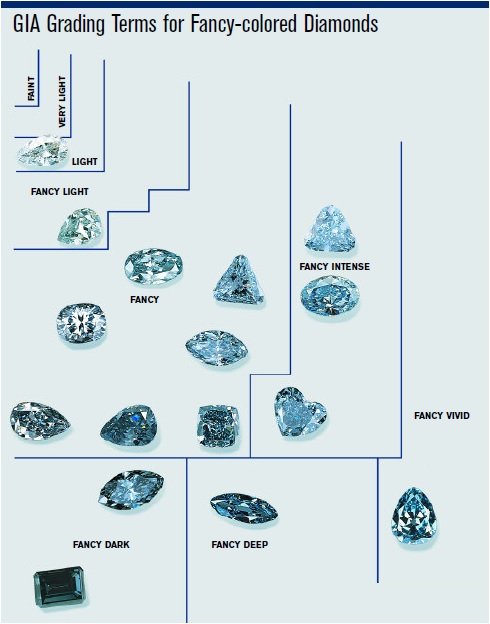
Grades are assigned based on the overall effects of hue, tone and saturation.
Note that warmer color hues like orange or yellow gradually appear to look brownish as their saturation decreases. On the other hand, cooler shades like blue tend to gravitate towards greyish colors.
Sometimes, diamonds can have more than one color hue in its body. In such cases, the dominant color is always described last. Here are some real-life examples to illustrate this in more detail. To see full product specifications, simply click on the images.
Can you see the differences between “yellowish green” (left) and “greenish yellow” (right)?
In some cases, diamonds can even have a third or fourth color. However, the same rules still apply that the primary color is stated last.

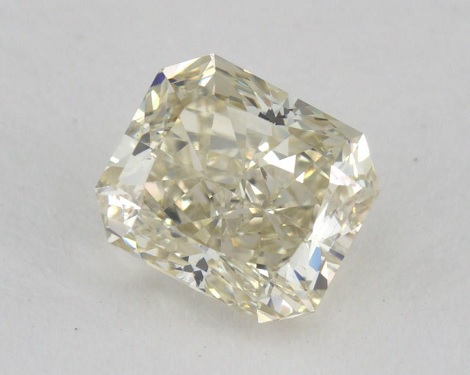
Diamonds with multiple colors: Grayish yellowish green (left) and brownish greenish yellow (right)
In a nutshell, the GIA grading system describes color in an objective manner that is understood and accepted throughout the world. When it comes to fancy colored diamonds, every little detail matters because it can mean the difference between thousands of dollars.
That is why I only recommend buying colored diamonds with grading reports from GIA and never from unreliable labs like IGI or EGL.
Related Articles
Leave A Comment

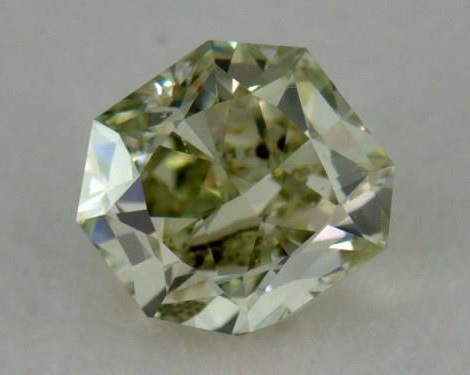
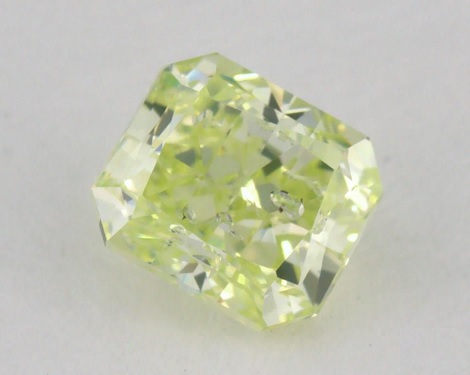
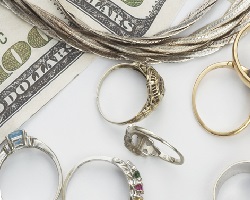
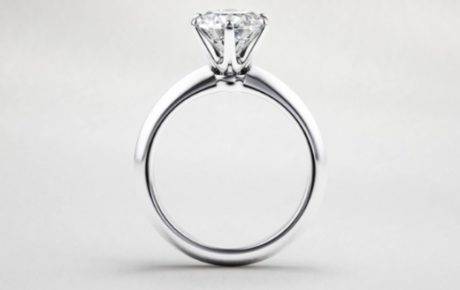
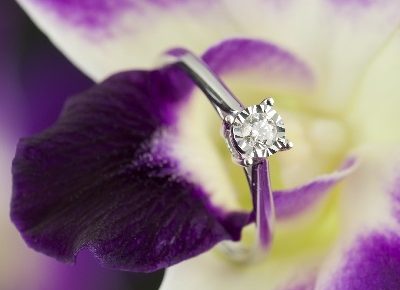
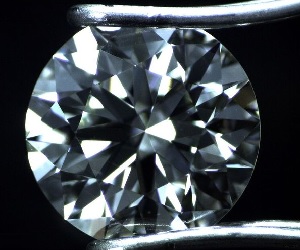









8 Comments
The gia fancy color diamond grading chart was really useful as it enabled me to know at a glance how the various colors looked like. I understand that blue fluorescence might sometimes cause issues in white diamonds. However, when it comes to fancy colored stones, does fluorescence matter?
Hmmm, it depends on the nature of the fluorescence and there isn’t really a hard and fast answer on this.
For example, in fancy yellow stones, a strong yellow fluorescence might actually improve the intensity of the color in the diamond. This ADDs value to the gemstone.
On the other hand, if the yellow diamond exhibits a blue fluorescence, it might actually depreciate the value of the stone as it makes the diamond looks whiter.
When it comes to colored stones, we want them to have an intense color as much as possible. Any attributes that contribute towards a better hue will be more valuable and perceived as a positive.
I’ve read some of your articles about the reliability of grading labs and I found them to be very informative. I know you would recommend GIA/AGS over EGL/IGI grading reports when it comes to “white” diamonds.
However, what about colored diamonds? I looked at my local store and found a nice looking fancy yellow diamond graded by EGL. Do the same “lax” standards apply for fancy colored diamonds too?
In my opinion, GIA is the most respected lab when it comes to grading fancy colored diamonds. It’s no coincidence that the most valuable diamonds are always sent to the GIA lab and when it returns to the jeweler, they can charge a rightful premium on the stone.
For the other diamonds that goes to EGL/IGI, why do you think the jeweler would send them there? Well, I can tell you this – the choice of labs where diamonds get graded isn’t random. Diamonds are sent to be graded at EGL/IGI so that the jeweler gets a “bumped” grading report which allows him to sell the stone at better prices.
When it comes to fancy colored diamonds, the main factor that determines value and price is color. For example, you can expect a huge price jump for a faint pink to a fancy vivid pink diamond. Also if the diamond has a secondary color in it, the value of the diamond also changes. For example, a fancy brownish pink diamond have lesser value that a fancy pink diamond.
Hue and saturation is the primary price decider in fancy colored diamonds
An intense yellow diamond costs significantly less than the pinks – fancydiamonds.net
Since you had read my article on the differences between the grading labs, you would have known that EGL is really the “jeweler’s friend” and GIA is the “consumer’s friend”. The same exact stone submitted to GIA and EGL for grading would most likely come back showing different grades.
Stick with GIA. They are the industry leaders when it comes to objective grading of colored diamonds. When you are laying down a substantial amount of money on the table, you want to make sure you are paying the right amount for the quality you are getting.
Hey Paul,
It’s mike here. Thanks for answering my query and sharing your knowledge with the rest of the online community. My wife loves the diamond even though I told her about the potential lax grading that the diamond might have.
After reading your reply, I have my reservations on the diamond but my wife would be the decision maker on this. Is there any advice you can offer me to protect myself if I were to go ahead and make the purchase?
Mike S.
My best advice for you is to insist on a GIA grading report. You might want to request the jeweler to send the diamond to GIA to be graded. In such scenarios, you would usually be required to make a deposit on the diamond. Of course, this would incur a slight additional cost since there are grading fees and transportation fees involved. It is best to negotiate and get some of the following points down in writing.
1) If the diamond comes back with a GIA report that states the specifications to be similar to the current EGL report, I think it would only be fair for you to pick up the shipping fees and grading expenses. The jeweler shouldn’t bear the additional costs of an additional GIA grading of the diamond.
2) If it doesn’t come back as such; Color grading grossly inflated, diamond shows signs of artificial treatment and etc…, you should be entitled to a full refund and that the jeweler should pay the additional costs of the GIA grading. Of course, if you are still deeply interested in the diamond, the GIA report would be leverage for you to negotiate a better price for the diamond.
When buying fancy colored diamonds, choosing the right jeweler is the key to making a successful purchase. JamesAllen.com has more than 1,400+ GIA graded diamonds of different shapes and colors. More importantly, they have upclose 360˚ videos which enable you to see exactly what you will get.
Hope this helps.
I never buy a fancy colored diamond unless it’s graded by GIA. Well, I found a Fancy deep Orange diamond .36, SI1, pear shape pretty diamond graded by IGI. I bought the diamond from Leibish to whom I trust. The map of the diamond looks like the real deal. Should I be concerned? I have a yellowish-Orange diamond but wanted an Orange with no modifiers. Should I be concerned or just send it to GIA myself. I am nuts over fancy colored diamonds and ORANGE is my favorite color.
I’m quite surprised Leibish sold you an IGI graded diamond. When it comes to colored diamonds, I demand a GIA report and that’s for my own peace of mind. Even as a trained gemologist, I cannot determine whether a diamond is treated or not without proper equipment that is used in the GIA laboratory.